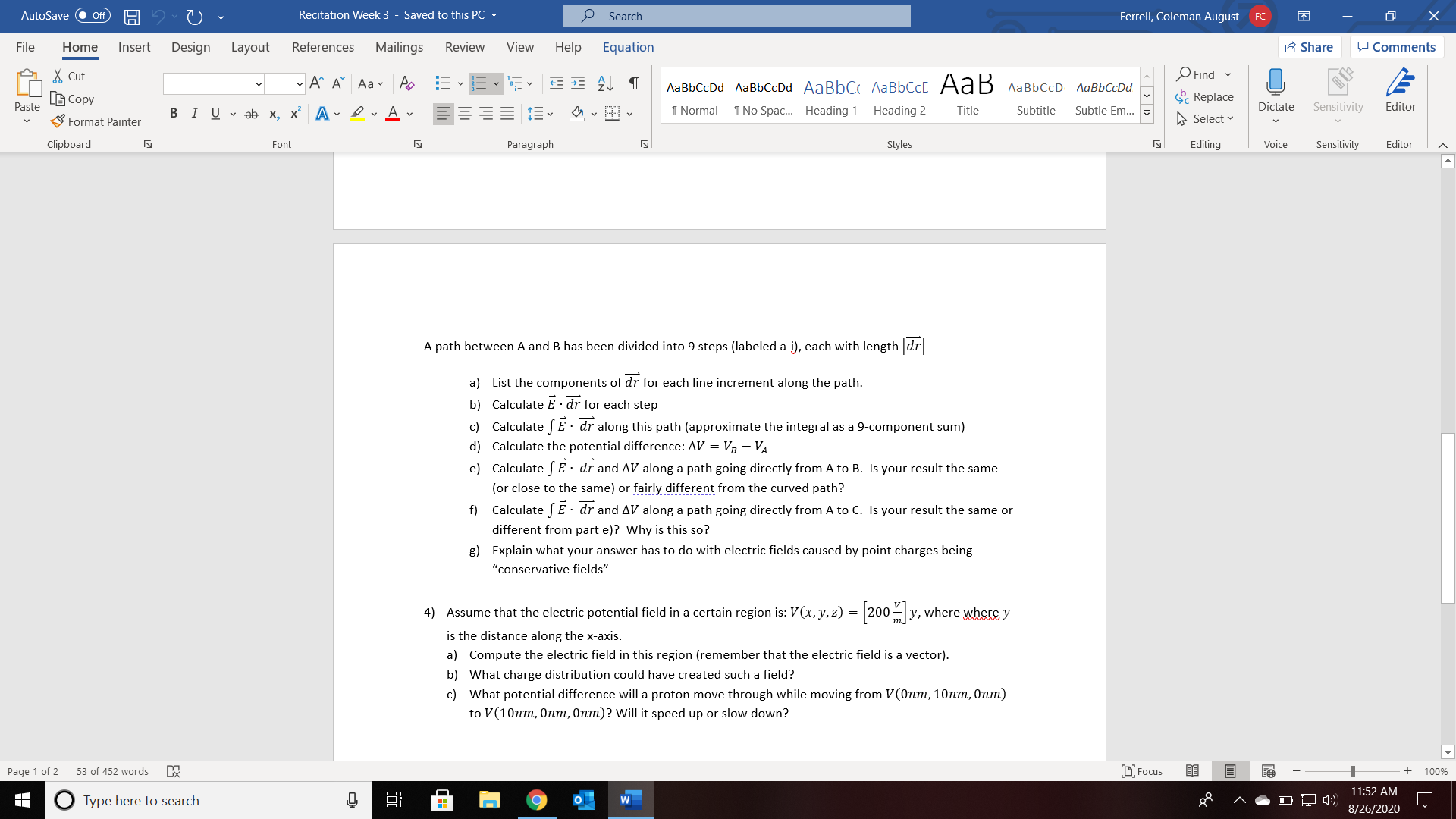A path between A and B has been divided into 9 steps (labeled a-i), each with length |dr| a) List the components of dr for each line increment along the path. b) Calculate E · dr for each step c) Calculate SE · dr along this path (approximate the integral as a 9-component sum) d) Calculate the potential difference: AV = V3 – VA e) Calculate SE · dr and AV along a path going directly from A to B. Is your result the same (or close to the same) or fairly different from the curved path? f) Calculate SE · dr and AV along a path going directly from A to C. Is your result the same or different from part e)? Why is this so? g) Explain what your answer has to do with electric fields caused by point charges being "conservative fields"
A path between A and B has been divided into 9 steps (labeled a-i), each with length |dr| a) List the components of dr for each line increment along the path. b) Calculate E · dr for each step c) Calculate SE · dr along this path (approximate the integral as a 9-component sum) d) Calculate the potential difference: AV = V3 – VA e) Calculate SE · dr and AV along a path going directly from A to B. Is your result the same (or close to the same) or fairly different from the curved path? f) Calculate SE · dr and AV along a path going directly from A to C. Is your result the same or different from part e)? Why is this so? g) Explain what your answer has to do with electric fields caused by point charges being "conservative fields"
Related questions
Question
In the pictured region of space, the electric field is equal to 200 N/C (oriented in the y-axis direction). The spacing between the grid lines is 1.0 cm. The goal of the problem is to calculate the potential difference between points A and B, by doing a path integral by hand.
I need help with parts A-D

Transcribed Image Text:A path between A and B has been divided into 9 steps (labeled a-i), each with length |dr|
a) List the components of dr for each line increment along the path.
b) Calculate E · dr for each step
c) Calculate SE · dr along this path (approximate the integral as a 9-component sum)
d) Calculate the potential difference: AV = V3 – VA
e) Calculate SE · dr and AV along a path going directly from A to B. Is your result the same
(or close to the same) or fairly different from the curved path?
f) Calculate SE · dr and AV along a path going directly from A to C. Is your result the same or
different from part e)? Why is this so?
g) Explain what your answer has to do with electric fields caused by point charges being
"conservative fields"

Expert Solution
This question has been solved!
Explore an expertly crafted, step-by-step solution for a thorough understanding of key concepts.
This is a popular solution!
Trending now
This is a popular solution!
Step by step
Solved in 4 steps with 7 images
